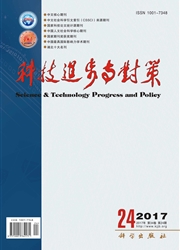

 中文摘要:
中文摘要:
利用85个国家1989—2011年的跨国数据,实证检验不同收入水平下,金融结构对国家技术创新的影响差异。结果显示,高收入水平国家偏向于金融市场的金融结构更加有利于技术创新。基于新结构经济学理论思想,对该结果进行了解释:不同收入水平国家的创新结构不同,即自主研发和模仿创新的比例不同。从事自主研发和模仿创新的企业在风险特征、企业规模方面具有差异,这要求不同比例的金融市场和银行信贷与之匹配。由此,创新结构决定技术创新视角下的最优金融结构。因此,在特定发展阶段,存在与之相匹配的最能有效促进技术创新的金融结构。该结论强调了考虑发展阶段因素的必要性,为新结构经济学相关理论提供了新的实证证据,也具有明确的政策含义。
 英文摘要:
英文摘要:
The empirical analysis is made to find how income level influence the relationship between financial structure and national technology innovation with data of 85 countries from 1989 to 2011. The results show that financial structure that is more biased towards financial market is more conducive to national technology innovation in higher income countries. This paper explain the results based on the idea of new structure economics: national innovation structure--proportion of independent research and development and imitation. Innovation is not the same for countries at different income levels. Risk characteristics and firm scales are different for firms engaged in independent research and development and those en- gaged in imitation innovation. Therefore, the proper proportion of financial market and bank credit varies with innovation structure. In this context,innovation structure determines optimal financial structure in the perspective of technology inno- vation. Thus,there exists a certain financial structure that could improve technology innovation most efficiently for each development stage. This conclusion emphasizes the necessity of considering development stage when analyzing the impact of financial structure on technology innovation. This paper provides new empirical evidence for new structure economics and possesses definite policy implications.
 同期刊论文项目
同期刊论文项目
 同项目期刊论文
同项目期刊论文
 期刊信息
期刊信息
